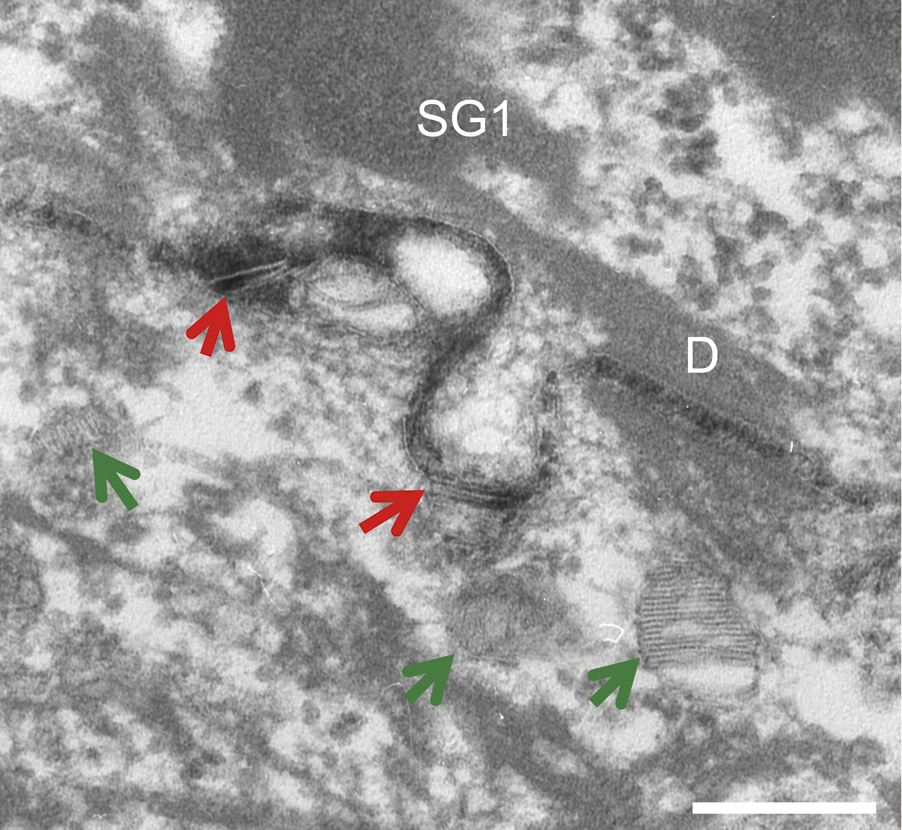|
A549 (cell Line)
A549 cells are adenocarcinomic human alveolar basal epithelial cells, and constitute a cell line that was first developed in 1972 by D. J. Giard, et al. through the removal and culturing of cancerous lung tissue in the explanted tumor of a 58-year-old caucasian male. The cells are used as models for the study of lung cancer and the development of drug therapies against it. Characteristics A549 cells, as found in the lung tissue of their origin, are squamous and responsible for the diffusion of some substances, such as water and electrolytes, across alveoli. If A549 cells are cultured ''in vitro'', they grow as a monolayer; adherent or attaching to the culture flask. The cells are able to synthesize lecithin and contain high levels of unsaturated fatty acids, which are important to maintain membrane phospholipids. A549 cells are widely used as a type II pulmonary epithelial cell model for drug metabolism and as a transfection host. When grown for a sufficiently long time in ce ... [...More Info...] [...Related Items...] OR: [Wikipedia] [Google] [Baidu] |
Cellular Differentiation
Cellular differentiation is the process in which a stem cell alters from one type to a differentiated one. Usually, the cell changes to a more specialized type. Differentiation happens multiple times during the development of a multicellular organism as it changes from a simple zygote to a complex system of tissues and cell types. Differentiation continues in adulthood as adult stem cells divide and create fully differentiated daughter cells during tissue repair and during normal cell turnover. Some differentiation occurs in response to antigen exposure. Differentiation dramatically changes a cell's size, shape, membrane potential, metabolic activity, and responsiveness to signals. These changes are largely due to highly controlled modifications in gene expression and are the study of epigenetics. With a few exceptions, cellular differentiation almost never involves a change in the DNA sequence itself. Although metabolic composition does get altered quite dramaticall ... [...More Info...] [...Related Items...] OR: [Wikipedia] [Google] [Baidu] |
Chemokine
Chemokines (), or chemotactic cytokines, are a family of small cytokines or signaling proteins secreted by cells that induce directional movement of leukocytes, as well as other cell types, including endothelial and epithelial cells. In addition to playing a major role in the activation of host immune responses, chemokines are important for biological processes, including morphogenesis and wound healing, as well as in the pathogenesis of diseases like cancers. Cytokine proteins are classified as chemokines according to behavior and structural characteristics. In addition to being known for mediating chemotaxis, chemokines are all approximately 8-10 kilodaltons in mass and have four cysteine residues in conserved locations that are key to forming their 3-dimensional shape. These proteins have historically been known under several other names including the ''SIS family of cytokines'', ''SIG family of cytokines'', ''SCY family of cytokines'', ''Platelet factor-4 superfamily'' or ... [...More Info...] [...Related Items...] OR: [Wikipedia] [Google] [Baidu] |
Tuberculosis
Tuberculosis (TB) is an infectious disease usually caused by '' Mycobacterium tuberculosis'' (MTB) bacteria. Tuberculosis generally affects the lungs, but it can also affect other parts of the body. Most infections show no symptoms, in which case it is known as latent tuberculosis. Around 10% of latent infections progress to active disease which, if left untreated, kill about half of those affected. Typical symptoms of active TB are chronic cough with blood-containing mucus, fever, night sweats, and weight loss. It was historically referred to as consumption due to the weight loss associated with the disease. Infection of other organs can cause a wide range of symptoms. Tuberculosis is spread from one person to the next through the air when people who have active TB in their lungs cough, spit, speak, or sneeze. People with Latent TB do not spread the disease. Active infection occurs more often in people with HIV/AIDS and in those who smoke. Diagnosis of active TB is ... [...More Info...] [...Related Items...] OR: [Wikipedia] [Google] [Baidu] |
Gene Expression
Gene expression is the process by which information from a gene is used in the synthesis of a functional gene product that enables it to produce end products, protein or non-coding RNA, and ultimately affect a phenotype, as the final effect. These products are often proteins, but in non-protein-coding genes such as transfer RNA (tRNA) and small nuclear RNA (snRNA), the product is a functional non-coding RNA. Gene expression is summarized in the central dogma of molecular biology first formulated by Francis Crick in 1958, further developed in his 1970 article, and expanded by the subsequent discoveries of reverse transcription and RNA replication. The process of gene expression is used by all known life—eukaryotes (including multicellular organisms), prokaryotes (bacteria and archaea), and utilized by viruses—to generate the macromolecular machinery for life. In genetics, gene expression is the most fundamental level at which the genotype gives rise to the phenotype, '' ... [...More Info...] [...Related Items...] OR: [Wikipedia] [Google] [Baidu] |
Xenograft
Xenotransplantation (''xenos-'' from the Greek meaning "foreign" or strange), or heterologous transplant, is the transplantation of living cells, tissues or organs from one species to another. Such cells, tissues or organs are called xenografts or xenotransplants. It is contrasted with allotransplantation (from other individual of same species), syngeneic transplantation or isotransplantation (grafts transplanted between two genetically identical individuals of the same species) and autotransplantation (from one part of the body to another in the same person). Xenotransplantation of human tumor cells into immunocompromised mice is a research technique frequently used in pre-clinical oncology research. Human xenotransplantation offers a potential treatment for end-stage organ failure, a significant health problem in parts of the industrialized world. It also raises many novel medical, legal and ethical issues. A continuing concern is that many animals, such as pigs, have a s ... [...More Info...] [...Related Items...] OR: [Wikipedia] [Google] [Baidu] |
In Vivo
Studies that are ''in vivo'' (Latin for "within the living"; often not italicized in English) are those in which the effects of various biological entities are tested on whole, living organisms or cells, usually animals, including humans, and plants, as opposed to a tissue extract or dead organism. This is not to be confused with experiments done ''in vitro'' ("within the glass"), i.e., in a laboratory environment using test tubes, Petri dishes, etc. Examples of investigations ''in vivo'' include: the pathogenesis of disease by comparing the effects of bacterial infection with the effects of purified bacterial toxins; the development of non-antibiotics, antiviral drugs, and new drugs generally; and new surgical procedures. Consequently, animal testing and clinical trials are major elements of ''in vivo'' research. ''In vivo'' testing is often employed over ''in vitro'' because it is better suited for observing the overall effects of an experiment on a living subject. In dr ... [...More Info...] [...Related Items...] OR: [Wikipedia] [Google] [Baidu] |
In Vitro
''In vitro'' (meaning in glass, or ''in the glass'') studies are performed with microorganisms, cells, or biological molecules outside their normal biological context. Colloquially called "test-tube experiments", these studies in biology and its subdisciplines are traditionally done in labware such as test tubes, flasks, Petri dishes, and microtiter plates. Studies conducted using components of an organism that have been isolated from their usual biological surroundings permit a more detailed or more convenient analysis than can be done with whole organisms; however, results obtained from ''in vitro'' experiments may not fully or accurately predict the effects on a whole organism. In contrast to ''in vitro'' experiments, ''in vivo'' studies are those conducted in living organisms, including humans, and whole plants. Definition ''In vitro'' ( la, in glass; often not italicized in English usage) studies are conducted using components of an organism that have been isolated fro ... [...More Info...] [...Related Items...] OR: [Wikipedia] [Google] [Baidu] |
Bevacizumab
Bevacizumab, sold under the brand name Avastin among others, is a medication used to treat a number of types of cancers and a specific eye disease. For cancer, it is given by slow injection into a vein (intravenous) and used for colon cancer, lung cancer, glioblastoma, and renal-cell carcinoma. In many of these diseases it is used as a first-line therapy. For age-related macular degeneration it is given by injection into the eye (intravitreal). Common side effects when used for cancer include nose bleeds, headache, high blood pressure, and rash. Other severe side effects include gastrointestinal perforation, bleeding, allergic reactions, blood clots, and an increased risk of infection. When used for eye disease side effects can include vision loss and retinal detachment. Bevacizumab is a monoclonal antibody that functions as an angiogenesis inhibitor. It works by slowing the growth of new blood vessels by inhibiting vascular endothelial growth factor A (VEGF-A), in other word ... [...More Info...] [...Related Items...] OR: [Wikipedia] [Google] [Baidu] |
Docetaxel
Docetaxel (DTX or DXL), sold under the brand name Taxotere among others, is a chemotherapy medication used to treat a number of types of cancer. This includes breast cancer, head and neck cancer, stomach cancer, prostate cancer and non-small-cell lung cancer. It may be used by itself or along with other chemotherapy medication. It is given by slow injection into a vein. Common side effects include hair loss, cytopenia (low blood cell counts), numbness, shortness of breath, nausea, vomiting, and muscle pains. Other severe side effects include allergic reactions and future cancers. Docetaxel induced pneumotoxicity is also a well recognized adverse effect which has to be identified timely and treated after withholding the drug Side effects are more common in people with liver problems. Use during pregnancy may harm the baby. Docetaxel is in the taxane family of medications. It works by disrupting the normal function of microtubules and thereby stopping cell division. Docetaxe ... [...More Info...] [...Related Items...] OR: [Wikipedia] [Google] [Baidu] |
Paclitaxel
Paclitaxel (PTX), sold under the brand name Taxol among others, is a chemotherapy medication used to treat a number of types of cancer. This includes ovarian cancer, esophageal cancer, breast cancer, lung cancer, Kaposi's sarcoma, cervical cancer, and pancreatic cancer. It is administered by intravenous injection. There is also an albumin-bound formulation. Common side effects include hair loss, bone marrow suppression, numbness, allergic reactions, muscle pains, and diarrhea. Other serious side effects include heart problems, increased risk of infection, and lung inflammation. There are concerns that use during pregnancy may cause birth defects. Paclitaxel is in the taxane family of medications. It works by interference with the normal function of microtubules during cell division. Paclitaxel was first isolated in 1971 from the Pacific yew and approved for medical use in 1993. It is on the World Health Organization's List of Essential Medicines. It has been made from precu ... [...More Info...] [...Related Items...] OR: [Wikipedia] [Google] [Baidu] |
Lamellar Bodies
In cell biology, lamellar bodies (otherwise known as lamellar granules, membrane-coating granules (MCGs), keratinosomes or Odland bodies) are secretory organelles found in type II alveolar cells in the lungs, and in keratinocytes in the skin. They are oblong structures, appearing about 300-400 nm in width and 100-150 nm in length in transmission electron microscopy images. Lamellar bodies in the alveoli of the lungs fuse with the cell membrane and release pulmonary surfactant into the extracellular space. Role in lungs In alveolar cells the phosphatidylcholines (choline-based phospholipids) that are stored in the lamellar bodies serve as pulmonary surfactant after being released from the cell. In 1964, using transmission electron microscopy, which at that time was a relatively new tool for ultrastructural elucidation, John Balis identified the presence of lamellar bodies in type II alveolar cells, and further noted that upon their exocytotic migration to the alveola ... [...More Info...] [...Related Items...] OR: [Wikipedia] [Google] [Baidu] |






